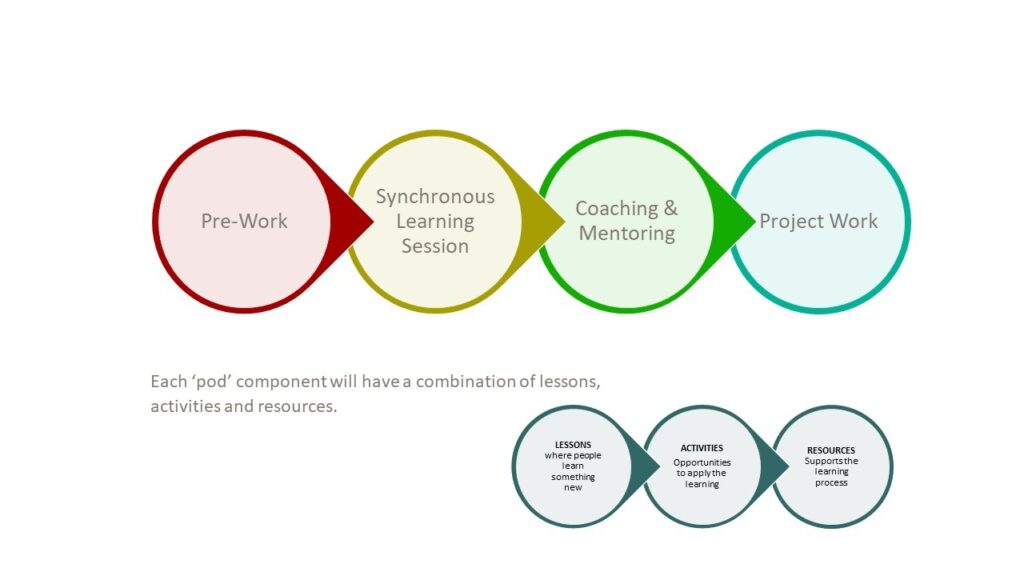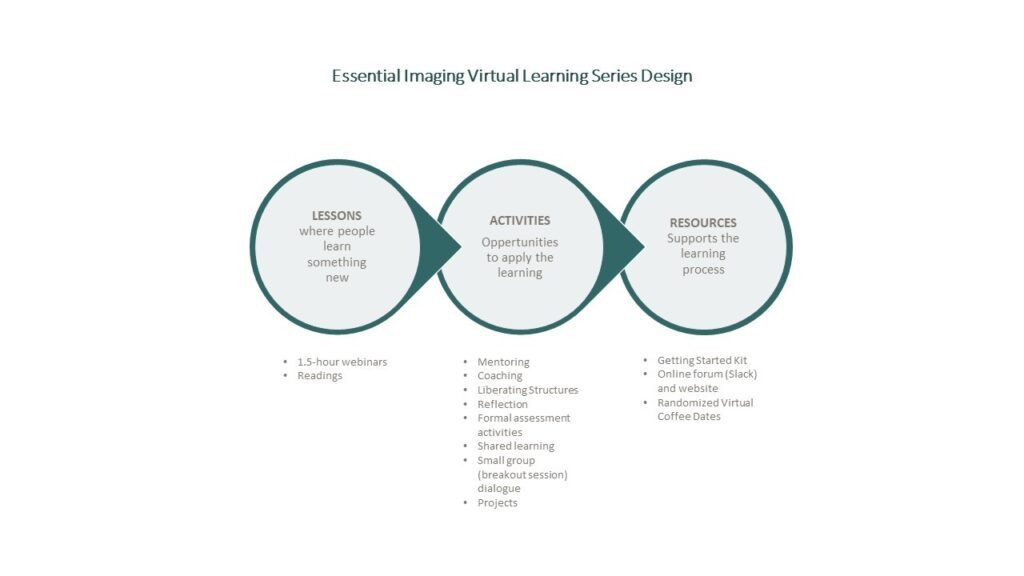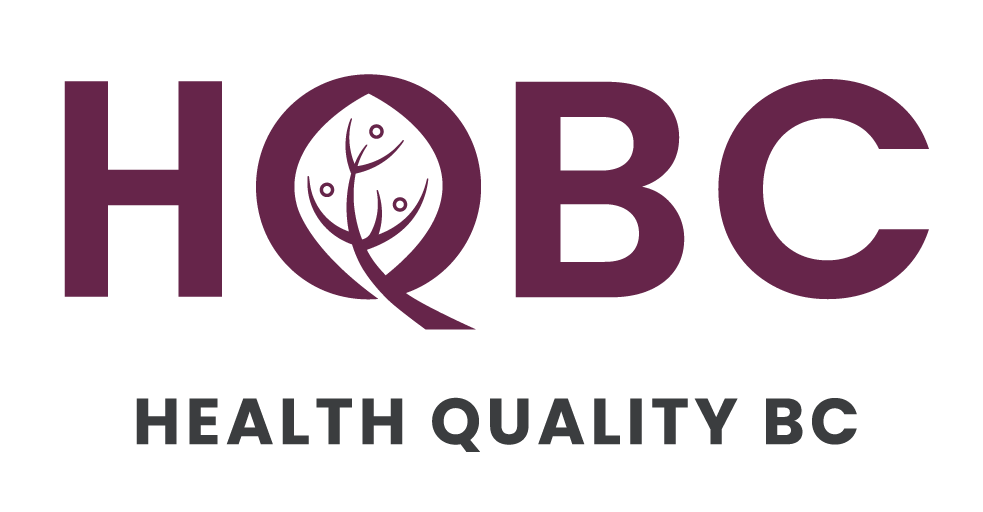Essential Imaging is a quality improvement initiative led by the BC Patient Safety & Quality Council in partnership with the Ministry of Health, with a goal to help care providers partner with patients to successfully initiate, test, implement and spread evidence-based best practices for appropriate medical imaging in five common areas in primary and emergency care.
These five areas are:
- Uncomplicated headache.
- Minor head injuries.
- Suspected pulmonary embolism.
- Low back pain.
- Moderate to severe osteoarthritis in hip or knee joints.
Teams enrolled in Essential Imaging will be provided with a robust Getting Started Kit which is a change package complete with change ideas, campaign resources and quality improvement methodologies to help guide improvement at the point of care. Learning webinars, access to subject matter experts from across the province as well as coaching calls from key leaders will also be offered to support teams with improvement efforts.
The purpose of the Essential Imaging initiative is to accelerate the spread and implementation of the BC Guidelines for Appropriate Medical Imaging and improve care provider’s access to evidence-based tools and change ideas that inform appropriate imaging requisition practices via a campaign and Action Series by March 2021.
This includes leveraging the BC Guidelines for Appropriate Imaging, promote patient and public awareness, support provider education and provide decision support resources to increase medical imaging appropriateness.
The provincial Guidelines and Protocols Advisory Committee (GPAC) has created guidelines for medical imaging in common situations. The purpose of these guidelines is to communicate best practice for imaging in common situations in primary and emergency care, in order to promote appropriate use of imaging resources in BC.
The following five recommendations were agreed to by a provincial expert advisory group on medical imaging in BC (https://bit.ly/3jJzIAf):
- Imaging is not recommended for uncomplicated headache unless red flags are present;
- CT head scans are not recommended in adults and children who have suffered minor head injuries unless positive for a head injury clinical decision rule;
- Chest CT for suspected pulmonary embolism is not recommended in low-risk patients with a normal D-dimer result;
- Imaging is not recommended for low back pain unless red flags are present; and
- MRIs of hip or knee joints are not recommended in patients with co-existent pain and moderate to severe osteoarthritis unless red flags are present.
Evidence indicates that up to 24% of medical imaging studies are unnecessary or inappropriate.[1] The Emergency Department (ED) and Primary Care settings provide a unique opportunity to connect with people who have questions or concerns on when to image and when to not image.
Your team is likely already experiencing instances of inappropriate and appropriate medical imaging daily and this initiative will support you to provide evidence-based, quality care.
Applying best practice for people worried about whether to image or not to image improves patient care and has the potential to reduce radiation and downstream testing, reduce variation in practitioner ordering, enable improved access for indicated imaging tests and in the case of ED diagnostics, reduce ED congestion due to testing time.
This initiative supports care providers to network and work together in new ways to expand team-based care, brings services together and improves coordination of care, and increases access for patients and care providers to appropriate services. This initiative will focus on appropriate management and enrichening patient relationships.
There is incredible work already happening across the province that is unique and adapted to local contexts and communities. This initiative model is an effective and efficient way to leverage that work by offering a platform for teams to connect and learn from each other as well as a faculty of experts to support them.
Participating teams will be provided the following resources and supports:
- A Getting Started Kit to help teams develop a better understanding of appropriate medical imaging and plan their quality improvement.
- Resources to support site-specific campaign material to target information for care providers and patients.
- Website access to view and download all materials and find appropriateness-related resources
- The ability to network and connect with other teams across the province for inspiration and support.
- A series of interactive webinars grounded in evidence and led by expert faculty.
- Virtual coaching and support.
Your team will benefit from focused support, the opportunity to collaborate with, and learn from, other teams from across the province, and quality improvement training that can be applied to all areas of care you provide.
An action series is a set of monthly webinars that support teams to expand on what they already know and develop and strengthen new skills and knowledge in order to hardwire best practices into everyday work. Teams from different emergency departments, primary care and specialist settings will work on the same problem at the same time, focusing on their specific local needs.
Through virtual learning, teams will have the opportunity to share effective change strategies, experience quality improvement coaching, learn about clinical best practices, access online resources and templates and be supported for data collection and analysis, all while leveraging organization and social networks as needed for success.


Within the action series, teams will have access to a set of robust resources to support site-specific campaigns to target information for care providers and patients. Specific campaign change ideas are included. The campaign will be supported by the development of information resources, posters and information sheets for patients and care providers.
A measurement plan will be included in the Getting Started Kit with suggested measures for teams to track their improvement efforts and impacts. Coaching clusters and/or 1:1 with a member of the Council will provide teams with support on how to collect and analyse data over time.
Sites participating in Essential Imaging will form interdisciplinary teams. These teams will identify goals and strategies specific to increasing appropriate medical imaging in their local ED, primary care or specialist setting, including developing connections to expand team-based supports for practitioners and patients.
Teams will support practice change, measure and evaluate their success and share their experience with others across the province. Teams will be expected to provide regular reporting as a condition of participating, but measurements will be kept as simple as possible to avoid extra burden.
For evaluation purposes, teams will also be asked to share information and data following the completion of the initiative.
Team members should plan to:
- Engage in team meetings and project work at their site;
- Connect with other teams and exchange ideas;
- Participate in five, one-hour webinar every four to six weeks (note that all webinars will be recorded to facilitate easy referencing and various shift schedules).
Look for our Call to Action posters in your local department to sign up! Reach out to your local clinical leaders to see if they are coordinating a team or contact your clinical department leader to see if your site has been identified for the initiative. If you are not sure who your local team lead is, please contact us.
A clinical lead that is connected to a health authority has been tasked with identifying sites with the most need and interest in participating. The focus is on a distribution of sites linked to a health authority and a mix of rural and urban sites of various sizes.
If your site is not currently involved in the initiative, you are still welcome to please contact us or visit our website and access resources.
Anyone who is interested in improving medical imaging appropriateness! This may include family physicians, nurse practitioners, emergency medicine practitioners, specialists, radiologists, technologists and clerical support staff, patient partners, physiotherapists and others.
Your team should aim to recruit four to seven people from different disciplines, including clinicians who work in partnership with a health authority, primary care and divisions of family practice. You may consider augmenting your team from time to time with ad-hoc members as needed – the makeup of your team is up to you!
Yes, you can still participate! Webinars will be recorded and made available to view. Coaching calls will be scheduled to work with the local team to allow as many team members to attend as possible. The learning and testing of change ideas can happen on a flexible schedule that works for your team.
Webinars will be scheduled and delivered using Zoom. Webinars will be recorded and posted online for anyone not able to attend in person.
Specific information on the webinar and login instructions will be shared well in advance of the event.
There is no charge to participate in the initiative. The improvement work involved in this initiative will be supported by your leader and embedded into your everyday workload.
Individual team members will contribute the time required to participate in the initiative including:
- Engaging in team meetings and communication
- Participating in online webinars (or recordings)
- Executing change ideas and tests of change!
All the content and learning generated from this initiative will be accessible online as the initiative progresses. Watch for updates with the web address soon!
Please contact the Essential Imaging project team at imaging@bcpsqc.ca.
- Medical Imaging Team Day partners. Appropriate use of medical imaging in Canada [Internet]. Ottawa: Canadian Association of Medical Radiation Technologists (CAMRT); 2012 May 17. [cited 2012 Dec 10]. Available from: http://www.imagingteam.ca/Appropriate_use_of_Medical_Imaging_in_Canada.pdf

